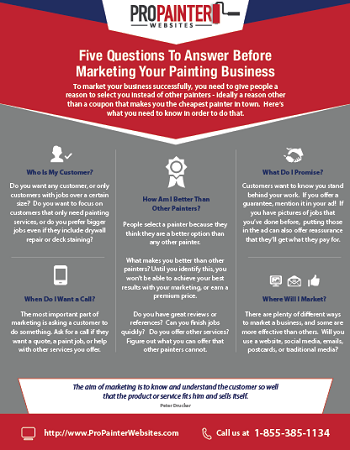Understand Exactly How Seasonal Problems Affect The Success Of Commercial External Paint And Find Out The Ideal Durations To Assure Durable End Results For Your Job
Understand Exactly How Seasonal Problems Affect The Success Of Commercial External Paint And Find Out The Ideal Durations To Assure Durable End Results For Your Job
Blog Article
Staff Writer-Leach Rodriquez
When you're planning an industrial outside painting project, seasonal aspects can make or damage your results. You'll wish to take into consideration exactly how temperature and humidity influence paint application and drying times. Selecting the appropriate season can guarantee your paint adheres properly and lasts longer. But which seasons are truly the very best for this type of job? Allow's check out the crucial elements that can affect your project's success.
The Influence of Temperature Level on Paint Application
When you're preparing a business exterior paint project, the temperature level can significantly affect exactly how well the paint sticks and dries.
Ideally, you want to paint when temperature levels vary between 50 ° F and 85 ° F. If it's as well chilly, the paint might not cure correctly, resulting in concerns like peeling or fracturing.
On the other side, if it's as well warm, the paint can dry also swiftly, avoiding appropriate attachment and causing an irregular coating.
You need to additionally consider the time of day; early morning or late afternoon uses cooler temperatures, which can be a lot more favorable.
Constantly examine the supplier's referrals for the particular paint you're making use of, as they frequently offer support on the ideal temperature range for optimum outcomes.
Humidity and Its Result on Drying Times
Temperature level isn't the only environmental variable that influences your industrial external painting task; moisture plays a significant role too. High humidity degrees can reduce drying times drastically, affecting the general quality of your paint job.
When the air is saturated with moisture, the paint takes longer to heal, which can lead to issues like poor attachment and a higher risk of mold development. If you're painting on an especially humid day, be prepared for extensive wait times between coats.
https://professional-exterior-hou86430.idblogz.com/34836169/residence-painters-discover-the-solution-for-a-cheerful-engaging-and-renewed-home-atmosphere to keep track of local climate condition and strategy appropriately. Ideally, aim for humidity levels in between 40% and 70% for optimum drying.
Keeping these factors in mind guarantees your task stays on track and supplies a long lasting surface.
Best Seasons for Commercial Outside Painting Projects
What's the best time of year for your business external paint projects?
https://www.realsimple.com/home-organizing/home-improvement/painting/gray-paint-colors and very early loss are commonly your best options. Throughout these periods, temperature levels are moderate, and humidity levels are commonly reduced, creating suitable conditions for paint application and drying out.
Stay clear of summer's intense heat, which can trigger paint to completely dry as well swiftly, resulting in inadequate bond and surface. Likewise, winter season's cold temperatures can impede correct drying out and healing, running the risk of the long life of your paint job.
Aim for days with temperatures between 50 ° F and 85 ° F for optimal outcomes. Remember to examine the neighborhood weather forecast for rain, as wet problems can ruin your task.
Planning around these variables guarantees your painting job runs smoothly and lasts much longer.
Conclusion
In conclusion, intending your commercial exterior paint projects around seasonal factors to consider can make a significant distinction in the end result. By organizing job during the perfect temperatures and humidity degrees, you'll guarantee much better bond and drying times. Keep in mind to keep an eye on local weather forecasts and select the correct time of year-- spring and early fall are your best options. Taking these actions will certainly help you attain a sturdy and professional finish that lasts.
